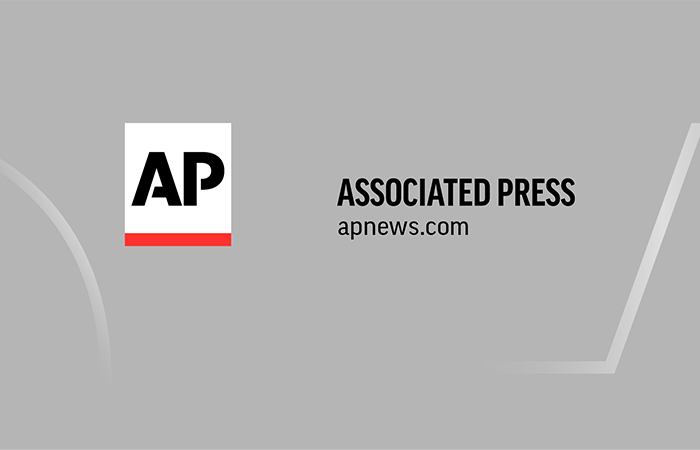The Battle for Truth: News Outlets Gear Up for Election Night Misinformation
October 26, 2024, 5:33 am
As the sun sets on Election Day, a storm brews in the information landscape. News outlets brace themselves for a deluge of misinformation. The stakes are high. The integrity of democracy hangs in the balance. This year, the battle against false narratives is more crucial than ever.
The Associated Press (AP) stands at the forefront. On election night, it will tabulate results from hundreds of races across the nation. This isn’t just a numbers game. It’s a complex dance of data, polling, and historical trends. The AP will detail its reasoning for declaring winners and losers. Transparency is the name of the game.
ABC News echoes this sentiment. Their Washington bureau chief emphasizes a mantra of “radical transparency.” It’s a call to arms for journalists. They must prepare the public for the chaos that often follows election results. The New York Times is reviving its infamous “Needle,” a tool that gauges the probability of victory for candidates. This year, it will come with detailed explanations. No more guessing games.
But it’s not just about reporting results. It’s about debunking falsehoods in real-time. The Times will assign reporters to scour the internet for conspiracy theories. Misinformation spreads like wildfire, and journalists must act as firefighters. NBC News has assembled a “Vote Watch” team. Thirty reporters will act as “county captains,” monitoring tight races and misinformation efforts.
The challenge lies in knowing when to engage with false narratives. Some theories simmer on the fringes, while others gain traction. Tim Richardson, a director at PEN America, trains journalists to discern the difference. If a falsehood is gaining attention, it’s time to step in. Silence can be complicity.
Periods of uncertainty are ripe for exploitation. In 2020, Joe Biden wasn’t declared the winner until days after Election Day. During that time, false narratives took root. Former President Trump’s claims of fraud became a rallying cry for his supporters. Journalists must tread carefully. They need to explain delays without inciting panic.
Election night is a high-pressure environment. Networks must decide whether to cut away from misleading speeches or provide immediate fact-checks. ABC News has been proactive, running a series called “Protecting Your Vote.” This initiative highlights false stories that are likely to resurface.
NPR is also on the front lines. Their disinformation team explores the role of artificial intelligence and foreign influence. They aim to debunk myths, such as the unfounded fear of noncitizen voters flooding the polls.
The weight of responsibility is palpable. Journalists feel the pressure. The information ecosystem is polluted. Trust in media has eroded. This is a critical moment for news organizations. They must deliver accurate information. Failure is not an option.
Election night coverage has evolved. It’s no longer just about counting votes. It’s about safeguarding democracy. Richardson believes journalists are entering uncharted territory. The landscape is shifting, and they must be ready.
The fight against misinformation is a marathon, not a sprint. It doesn’t end on Election Day. News outlets must continue to educate the public about false narratives. The goal is to build a more informed electorate.
The stakes are high. Misinformation can sway elections. It can undermine public trust. Journalists are the guardians of truth. They must rise to the occasion.
As the clock ticks down to Election Day, news organizations are gearing up. They are preparing for the chaos that often follows. The battle for truth is on. The future of democracy depends on it.
In this digital age, misinformation spreads like wildfire. Social media amplifies falsehoods. It’s a double-edged sword. While it connects people, it also creates echo chambers. Journalists must break through the noise. They must provide clarity in a sea of confusion.
The responsibility is immense. News outlets are not just reporting; they are educating. They are combating a tide of misinformation that threatens to engulf the public. The challenge is daunting, but the mission is clear.
As Election Day approaches, the atmosphere is charged. The public is anxious. Misinformation lurks in the shadows, waiting to pounce. Journalists must be vigilant. They must act swiftly to debunk falsehoods.
The battle for truth is not just a journalistic endeavor. It’s a societal imperative. Democracy thrives on informed citizens. Misinformation undermines that foundation.
In the coming days, news organizations will face a test. They must navigate the treacherous waters of election night. The world will be watching. The stakes have never been higher.
As the sun sets on Election Day, the fight for truth will begin. Journalists will be on the front lines, armed with facts and determination. They are the defenders of democracy. The battle for truth is just beginning.
The Associated Press (AP) stands at the forefront. On election night, it will tabulate results from hundreds of races across the nation. This isn’t just a numbers game. It’s a complex dance of data, polling, and historical trends. The AP will detail its reasoning for declaring winners and losers. Transparency is the name of the game.
ABC News echoes this sentiment. Their Washington bureau chief emphasizes a mantra of “radical transparency.” It’s a call to arms for journalists. They must prepare the public for the chaos that often follows election results. The New York Times is reviving its infamous “Needle,” a tool that gauges the probability of victory for candidates. This year, it will come with detailed explanations. No more guessing games.
But it’s not just about reporting results. It’s about debunking falsehoods in real-time. The Times will assign reporters to scour the internet for conspiracy theories. Misinformation spreads like wildfire, and journalists must act as firefighters. NBC News has assembled a “Vote Watch” team. Thirty reporters will act as “county captains,” monitoring tight races and misinformation efforts.
The challenge lies in knowing when to engage with false narratives. Some theories simmer on the fringes, while others gain traction. Tim Richardson, a director at PEN America, trains journalists to discern the difference. If a falsehood is gaining attention, it’s time to step in. Silence can be complicity.
Periods of uncertainty are ripe for exploitation. In 2020, Joe Biden wasn’t declared the winner until days after Election Day. During that time, false narratives took root. Former President Trump’s claims of fraud became a rallying cry for his supporters. Journalists must tread carefully. They need to explain delays without inciting panic.
Election night is a high-pressure environment. Networks must decide whether to cut away from misleading speeches or provide immediate fact-checks. ABC News has been proactive, running a series called “Protecting Your Vote.” This initiative highlights false stories that are likely to resurface.
NPR is also on the front lines. Their disinformation team explores the role of artificial intelligence and foreign influence. They aim to debunk myths, such as the unfounded fear of noncitizen voters flooding the polls.
The weight of responsibility is palpable. Journalists feel the pressure. The information ecosystem is polluted. Trust in media has eroded. This is a critical moment for news organizations. They must deliver accurate information. Failure is not an option.
Election night coverage has evolved. It’s no longer just about counting votes. It’s about safeguarding democracy. Richardson believes journalists are entering uncharted territory. The landscape is shifting, and they must be ready.
The fight against misinformation is a marathon, not a sprint. It doesn’t end on Election Day. News outlets must continue to educate the public about false narratives. The goal is to build a more informed electorate.
The stakes are high. Misinformation can sway elections. It can undermine public trust. Journalists are the guardians of truth. They must rise to the occasion.
As the clock ticks down to Election Day, news organizations are gearing up. They are preparing for the chaos that often follows. The battle for truth is on. The future of democracy depends on it.
In this digital age, misinformation spreads like wildfire. Social media amplifies falsehoods. It’s a double-edged sword. While it connects people, it also creates echo chambers. Journalists must break through the noise. They must provide clarity in a sea of confusion.
The responsibility is immense. News outlets are not just reporting; they are educating. They are combating a tide of misinformation that threatens to engulf the public. The challenge is daunting, but the mission is clear.
As Election Day approaches, the atmosphere is charged. The public is anxious. Misinformation lurks in the shadows, waiting to pounce. Journalists must be vigilant. They must act swiftly to debunk falsehoods.
The battle for truth is not just a journalistic endeavor. It’s a societal imperative. Democracy thrives on informed citizens. Misinformation undermines that foundation.
In the coming days, news organizations will face a test. They must navigate the treacherous waters of election night. The world will be watching. The stakes have never been higher.
As the sun sets on Election Day, the fight for truth will begin. Journalists will be on the front lines, armed with facts and determination. They are the defenders of democracy. The battle for truth is just beginning.

